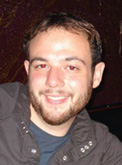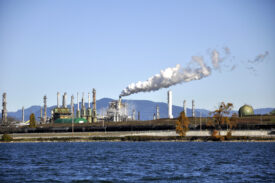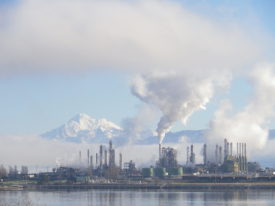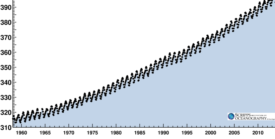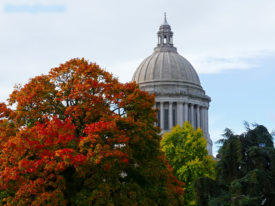Eric dP:
By far the coolest thing I read this week was Craig Welch’s front page coverage of the latest wolf pack documented in Washington, this time in the Teanaway region. Several years ago I was driving over Blewett Pass at night, not far away, when I had to skid to a stop to avoid hitting an animal crossing the highway. For a few seconds my headlights illuminated a big rangy husky-looking… what was it? My wife insisted it was someone’s dog on the loose, but it looked exactly like a wolf. I’m going to take this opportunity to say it now: she was wrong, and I was right.
The Seattle Times also had a good profile of local activist Elizabeth Campbell by reporter Lynn Thompson. There are plenty of things Campbell and I disagree about, but it seems to me that great places need people like Campbell who aren’t willing to go along easily with what leaders want.
I also very much enjoyed reading PubliCola’s latest installment in a series: Cara Vallier’s wistful essay on Seattle’s transformation over the last few decades.
On the national scene, Steven Mufson had a great account of the unpredictable forces behind oil prices in the Washington Post. And in New York magazine, Frank Rich had a scathing analysis of Obama’s failure to wrangle the country’s financial sector.
Clark:
It’s Viaduct week! In case you missed it, here’s a thoughtful, respectful defense of building a bored tunnel under downtown Seattle. I disagree with much of it, but it’s an actual argument, not a hit job. And if you’ve got a case of insomnia, I recommend the newly released Viaduct Environmental Impact Statement.
California is starting to recycle their roads.
Anna:
Climate scientists have long predicted that rising global temperatures would lead to extended periods of extreme drought. A 2007 study by NOAA and Lamont-Doherty Earth Observatory predicted we’d see “levels of aridity comparable to the 1930s Dust Bowl would stretch from Kansas to California” and a permanent drought by 2050. It’s hard not to wonder whether the “monster dust storm—a haboob—that hit Phoenix is just the shape of things to come for the entire Southwest.” It’s not pretty and it’s happening in American communities right now—watch it envelop the city in a wall of dust in these gripping timelapse images…
Last month the Intergovernmental Panel on Climate Change (IPCC) released its Special Report on Renewable Energy Sources which stated that 80 percent of global energy needs could come from renewable energy by 2050. Good news, right? But, as Rocky Mountain Institute reports, “the constraint in making this a reality is not technology, land area, or resources, but willpower.”
Is a budget a moral document? Religious leader Jim Wallis (of Sojourners) says ‘yes’ in a conversation on “Bloggingheads” with Richard Land of the Southern Baptist Convention. They also debate the role of war, tax breaks for the wealthiest, and poor families in our national debt.
This is “NEAT.” We’re burning more calories at Sightline…Some of us have switched to standing desks here in the office, for issues with posture or back pain more than diet. But I just read that standing burns about 50 percent more calories than sitting. According to James A. Levine, M.D., Ph.D., a researcher at the Mayo Clinic, an expert on Non-Exercise Activity Thermogenesis, or NEAT, “by standing while talking on the phone, working at your computer or reading the paper, a 155-pound person can burn as many as 50 more calories per hour.”
Alan:
Fans of Material World and Women in the Material World will like What the World Eats and the new What I Eat.
Eric H:
Along with a new study on the rapidly exploding obesity crisis in America, the Economist takes a look at how obesity isn’t uniform across the states: where you live makes a huge difference for your waistline.

